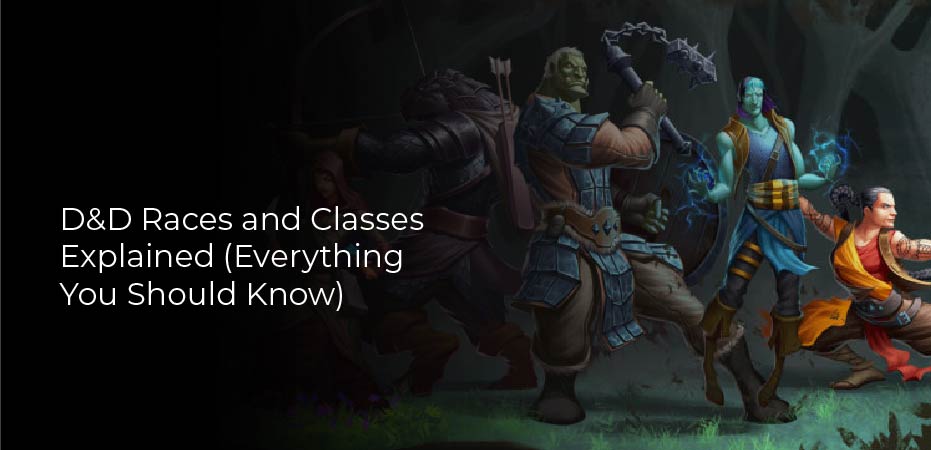The role-playing game D&D has grown from a complicated game played in musty basements to an international phenomenon. D&D has been introduced to more people than ever before through shows like Stranger Things and The Big Bang Theory. At the same time, podcasts and web series like Critical Role and Acquisitions Incorporated allow everyone to watch players play D&D online. The latest 5th Edition of the game (known as “5E”) has reached far beyond your average nerds.
The whole point of D&D is to use your imagination. There’s a system that allows you to create a story with your friends, and the story can be anything you like. I often have to explain to friends and family what this strange fantasy game is all about – and why I feel so compelled to start buying new dice since I’ve been playing for years.
Here’s our guide on D&D races, classes, and dice. It will take you through the most vital points to keep in mind, explaining how the mechanics behind the game work. It’s best to grab a character sheet and some dice and play the game for yourself first.
Races In D&D: Elves, Humans, Halflings, And More
You’re likely familiar with these fantasy race options if you’ve watched Lord of the Rings – especially the hobbits (or halflings) in Lord of the Rings.
There are nine races to choose from in the PHB (Player’s Handbook). The races all have their own characteristics and abilities and some subraces that add to the variety.
It is said that Elves can live up to 750 years, can see in the dark, and due to their magical heritage, they cannot be charmed by magic or put to sleep. If you compare them to Dwarves who live only about 350 years old, they also have darkvision, are resistant to poisons thanks to their sturdy bodies, but because of their small size, they also have weaker speed (remember Gimli running to catch Legolas?). High Elves are more adept with magic, while Wood Elves are faster and stealthier.
Having created your first character, you can already see the wide variety of options you have. The following is a quick breakdown of the different races described in the Player’s Handbook (which you can get more information on in the free Basic Rules on D&D Beyond):
- Dwarf – sturdy warriors, resistant to poison, good Fighters/ Barbarians
- Elf – graceful and long-lived, resistant to charm, immune to sleep, good Rogues/ Rangers
- Halfling – small and speedy, lucky, good Rogues/ Rangers
- Human – versatile people, lots of customization options, good for any class
- Dragonborn -have dragon blood of some kind, can breathe fire (or ice, acid, or lightning), good Paladins
Classes In D&D: Swords, Sorcery, Or Both?
The next step is choosing a class for your character once you have decided what race they are. Magic is used by some classes, weapons by others, and some combine both. It’s your class that decides what kind of things you’re allowed to do and what kind of role you play in D&D. You basically choose whether the healer, the tank, the support, or the DPS (high damage dealer) will be the tank, support, healer, or DPS (high damage dealer) in any online game.
As a new player, it’ll be easier to grasp the mechanics of martial classes and mixed classes (such as half-casters or third-casters with limited magical effects), but that doesn’t mean you can’t plunge into some magic-based shenanigans.
Martial Classes
- Barbar (Tank) A primal fighter who uses anger as fuel for powerful attacks and resistance to damage.
- The fighter (tank) is a trained, experienced warrior who can utilize a wide range of weapons with superior techniques.
- (DPS) A martial arts master who is capable of channeling energy to heighten their attacks.
- DPS Rogues (DPS) Rogues are masters of stealth, making them perfect for sneaking up on enemies and picking locks.


